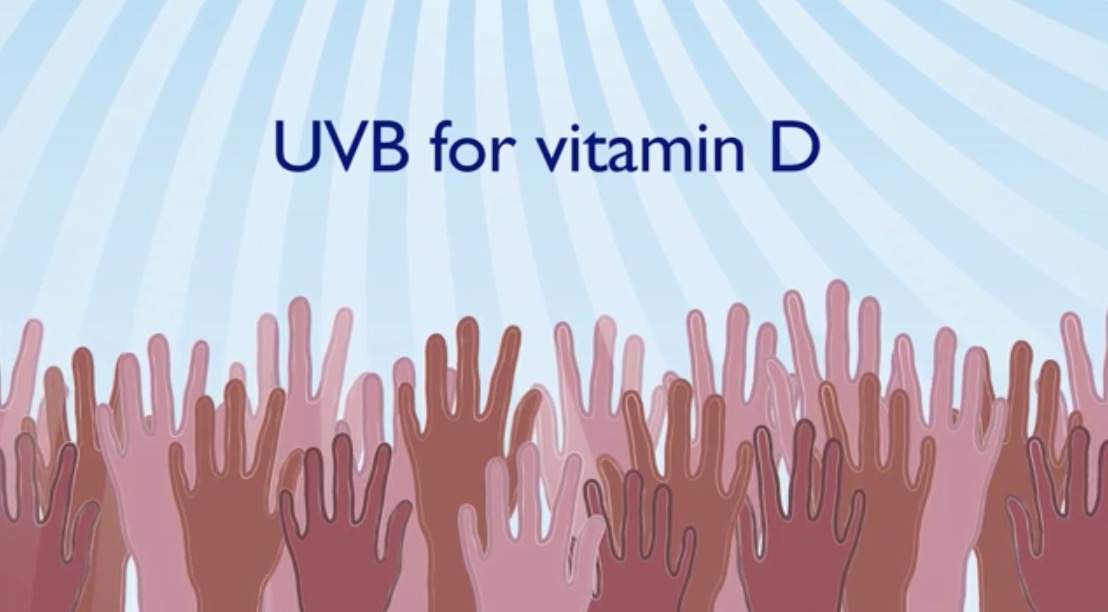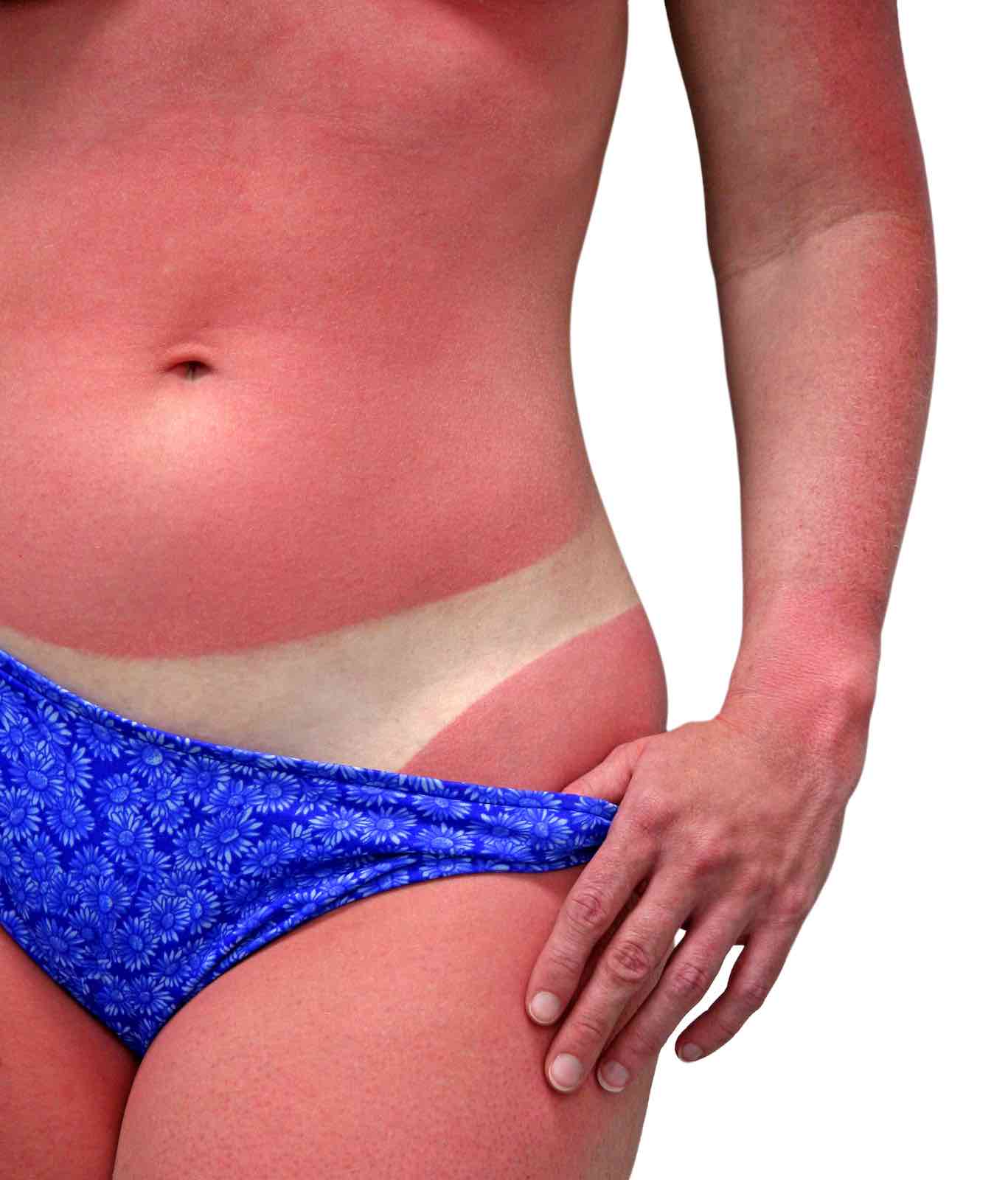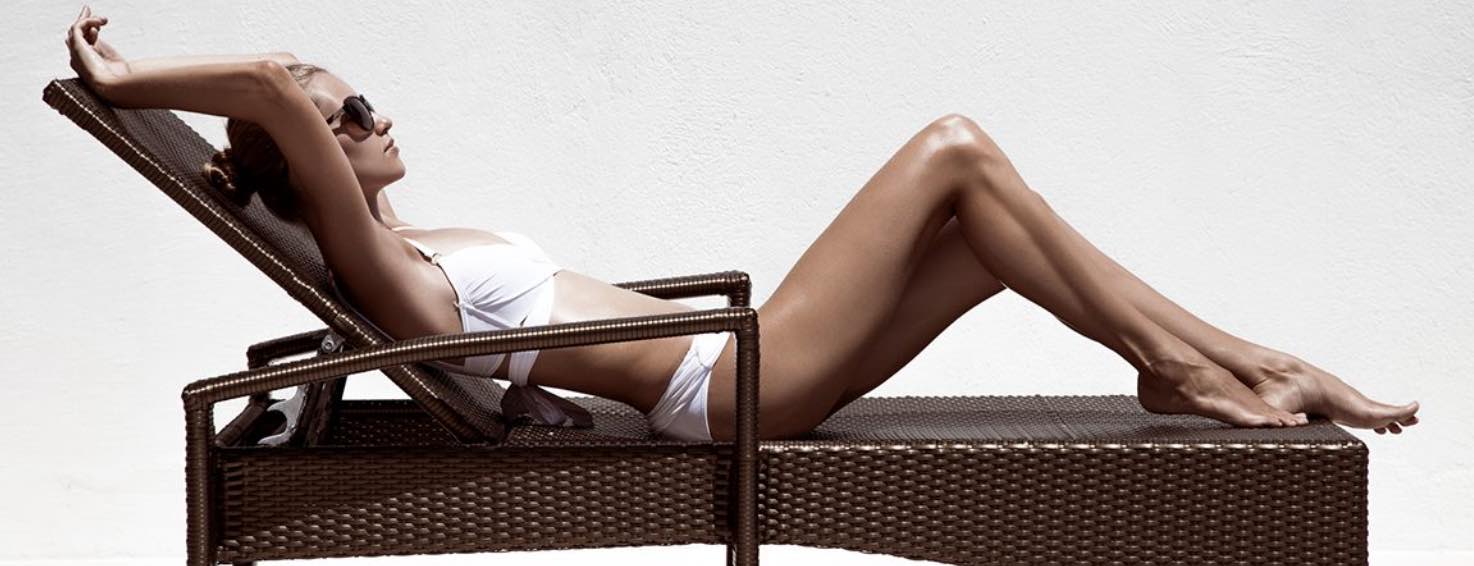Tanning bed safety
There is a dilemma concerning tanning bed safety...
Despite all the controversy in the press and pressure from various health bodies wanting to close down tanning salons or at least regulate them severely, UVB exposure allows our skin to create Vitamin D and is therefore great for one's health!

Is moderate tanning the safest way to maximize these benefits, while minimizing the potential risks of either:
- Too much exposure - resulting in sunburn (erythema)
- Too little exposure - missing out on the vital Vitamin D benefits
Tanning bed safety tips
 how not to do it - tanning bed sunburn
how not to do it - tanning bed sunburnGovernment regulation for the tanning booth industry in the United States and Canada, do their best to protect the public's interest.
But, as with all Government regulations that tend to be delayed and/or administratively overburdened, the best way to look after yourself, is to be as knowledgeable about tanning bed safety details as you can.
In a professional tanning bed facility today, you can manage the exposure time for each tanning session by using the schedule present on every piece of equipment.
This should take into account your skin type, as we need to know how well our skin copes with the UV rays. We are all different. No one skin is the same as another.
We then need to manage the intensity of the equipment to deliver a dosage of UV rays designed to minimize the danger of sunburn. These schedules, actually regulated by the U.S. Food and Drug Administration plus Health Canada, also take into account how long you have been tanning beforehand.
The idea is that you can increase the exposure times gradually, to prevent your tanning bed sessions causing your skin to burn.
Tanning bed safety vs outdoors tanning
There are some advantages in using tanning beds, as generally it is a whole lot more manageable than being outdoors where there are all sorts of variables to contend with:
- Time of year
- Time of day
- Weather conditions
- Reflective surfaces like ice or water
- Altitude
- Latitude
Spending time outdoors is greatly beneficial to all of us, no matter what age, sex, or culture! Depriving oneself of the wonderful qualities of the sun through Vitamin D creation is not recommended where good health for both body and mind is sought.
Studies have shown that indoor tanners are actually less likely to get sunburnt outdoors, when compared to non-indoor-tanners.
Studies of indoor tanners have shown consistently that indoor tanning customers, once they begin tanning in a professional salon where they are made aware of tanning bed safety issues, are less likely to sunburn than they were before they started tanning.
Tanning is your body's natural defense mechanism against sunburn, and indoor tanners activate this defense against burning.
A tan will also increase the efficiency of a sunscreen to do its job outdoors.
Strictly teaching people to avoid going out into the sun is impractical. It also makes them more likely to sunburn when they do go outside for summer activities, as a vast majority of people will go outdoors at some point.
Educating on Tanning bed safety
Because the indoor tanning salon industry is receiving so much negative press about UV damage from those that mis-manage and overdo it, or even become addicted to tanning .... educating people about tanning bed safety has become a huge topic.
In the war against sunburnt skin (erythema), tanning salons actually see themselves as part of the solution - through education about tanning bed safety issues.
Ultraviolet radiation (UVR) from artificial sun lamps has been used for many years to treat more than 40 kinds of skin diseases as well as obtaining a cosmetic tan either at home or in a commercial tanning salon.
Treatment is done by three types of phototherapy...
- broadband UVB phototherapy
- narrowband UVB phototherapy
- UVA phototherapy
Phototherapy combined with some chemicals (e.g., psoralen) (photochemotherapy) is also used to treat certain skin diseases, mainly psoriasis.
No matter whether used for recreational tanning or phototherapeutic purposes, using artificial UVR with long-term and high doses of exposure is becoming quite common. Long-term adverse effects include photo-aging and skin cancer.
Also, epidemiologic studies have shown an increased risk for melanoma in sunlamp users. It is well known that UVR can induce mutagenic and carcinogenic DNA lesions, mainly cyclobutane pyrimidine dimers (CPD).
In vitro studies have shown DNA damage in human fibroblasts and keratinocytes after exposure to artificial UVA lamps.*
Good Habits for Tanning Bed Safety
Tanning lotion.
Try to use a good quality tanning lotion product that is either recommended by the tanning salon or a reliable contact.
Make sure to read all of the instructions.
Never go into a tanning bed without some form of nourishing protection for your skin.
Tanning bed lotions not only help you get a better tan, they also contain moisturizing ingredients and antioxidants to nourish and hydrate your entire body.
Medications.
Before setting foot in a tanning bed, make sure you aren't on any medications that could react negatively with UV exposure.
Most tanning bed salons ask you to fill out a medical history questionnaire to address this. "In addition to an exaggerated skin burn, itching, scaling, rash or swelling", the following could result, according to the FDA...
- Skin cancer
- Premature skin aging
- Skin and eye burns
- Allergic reactions
- Cataracts (cloudiness over the eyes)
- Reduced immunity
- Blood vessel damage
So, it pays to be honest, as lying about some detail could result in a bad situation for you and your health, so it's hardly worth the risk. You can check out the FDA's list in more detail here.
Hygiene.
Each tanning bed sees its fair share of people throughout the day and if the beds aren't properly maintained and cleaned, you could face some issues.
It's also good to note there are fresh, clean towels for you to use.
Equipment.
Use the proper tanning equipment, such as tanning goggles to protect your eyes.
If you wear contacts, you must take them out during your tanning session.
Refs
* Chen et al. 1998;Walter et al. 1999;Westerdahl et al. 2000
* Woollons et al. 1997,1999





New! Comments
Have your say... please leave me a comment in the box below.